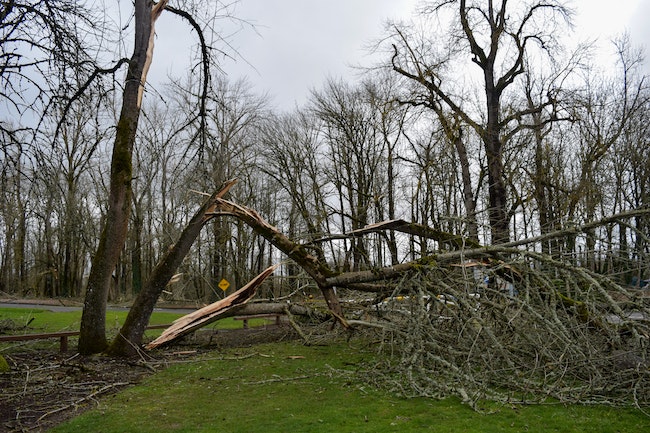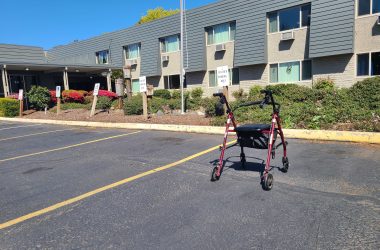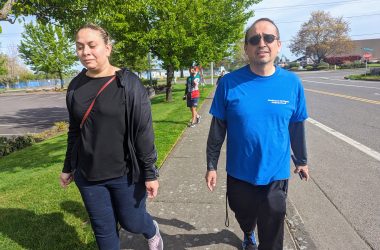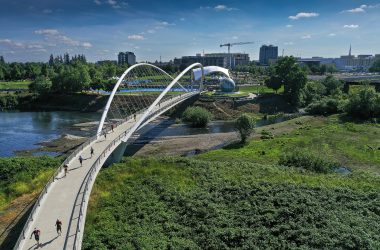
Downed trees at Wallace Marine Park on Feb. 15, 2021. (Saphara Harrell/Salem Reporter)
As Salem residents look to repair damaged trees on their property, Oregon State University’s extension office and the Oregon Department of Forestry have some advice.
The extension office said doing things properly after trees have been damaged can make the difference between survival or losing a tree unnecessarily.
“In the aftermath of a major storm, the initial impulse of property owners is generally along the lines of ‘let’s get this mess cleaned up.’ But hasty decisions can often result in removing trees that could have been saved,” an Oregon Department of Forestry tip sheet titled “First Aid After a Storm” says.
The document details how to remove broken branches, resist the urge to overprune and avoid “topping” trees or indiscriminately cutting branches.
Jim Gersbach, spokesman for the Oregon Department of Forestry, said the first consideration is always safety.
“Before you come running out while it’s still snowy and slushy with a chainsaw, look around assess the situation safely. Is it safe? Is this something you should and can be doing by yourself?” he said.
Gersbach said people should consider calling an arborist even if they have to wait a few weeks for them to come out, because it can end up costing more in the long run if someone doesn’t know what they’re doing.
“You can do more damage than the storm,” he said.
The ODF tip sheet said, “While storm damage may not always allow for ideal pruning cuts, professional arborists say that ‘topping’ – cutting main branches back to stubs – is one of the worst things you can do for your trees. Stubs will tend to grow back a lot of weakly-attached branches that are even more likely to break when another storm strikes. Also, the tree will need all its resources to recover from the stress of storm damage.”
Gersbach said people should assess the condition of the tree and if it was in good shape prior to the storm.
ODF has a tip sheet on determining whether a tree can be salvaged.
Some of it will be dependent on the type of tree and how old it is. Gersbach said oaks typically fare better when healing from cuts than trees like birches. Younger trees might be able to be replanted.
He said if a tree is uprooted or has lost all its branches, it might be a good time to completely remove it.
But he said an entire tree doesn’t need to come down just because it lost a few branches. When pruning, people should cut the dead limbs off at the branch collar, or the spot where the next joining branch is.
Salem is opening tree and woody debris drop-off locations at Woodmansee, Wallace, Geer and McKay parks starting Wednesday. The service is free and residents can deliver debris everyday from 8 a.m. to 6 p.m.
Cities around Marion County also have yard debris drop-offs.
Locations include:
Aumsville – Recology: 8712 Aumsville Hwy. S.E. M-F 8 a.m. – 4 p.m.
Keizer – Little League Park: 5245 Ridge Dr. N.E. Hours: 10 a.m. – 5 p.m.
Silverton – Oregon Garden: 879 W. Main St.
Stayton – Mill Creek Park: 2800 Kindle Way S.E. (Temporarily Closed)
Turner – Lake Parking lot: 6185 Turner Lake Road
Woodburn – Legion Park: 1385 Park Ave.
This story was updated to include Salem debris drop off sites.
Have a tip? Contact reporter Saphara Harrell at 503-549-6250, [email protected].
WE GET SALEM THE FACTS. Covering your community with care and depth. Salem Reporter – fair, accurate, independent. Subscribe and support our essential local service.









